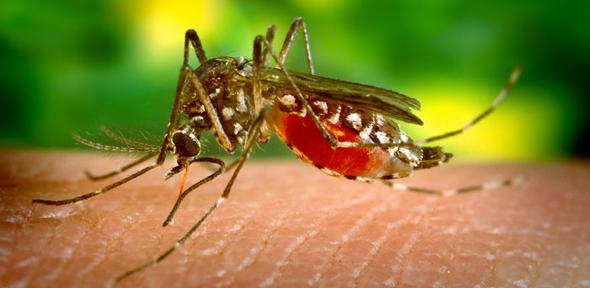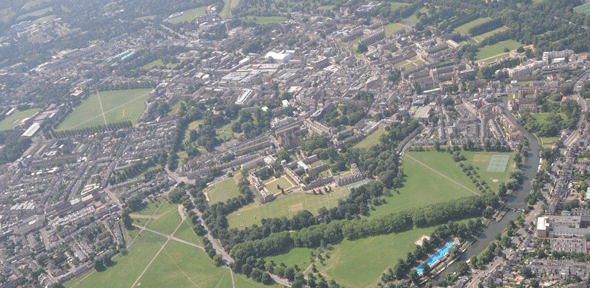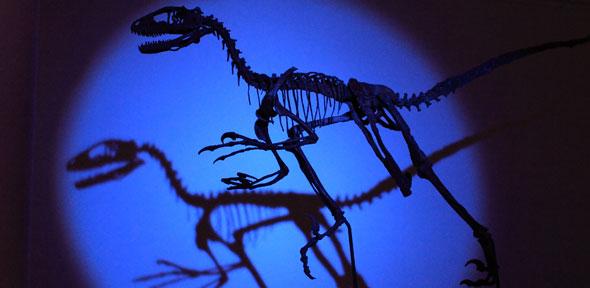“I greatly disdain piddling little buildings (plerumque indignor pusillis edificiis),” wrote a forthright Flemish monk called Goscelin of Saint-Bertin in a book dated around 1080. He went on to declare that: “I would not allow any buildings, however much they were valued, to stand unless they were, in my view, glorious, magnificent, tall, vast, filled with light and thoroughly beautiful.”
Goscelin, who dedicated his life to documenting the lives of saints, could have been describing the great Gothic cathedrals built to proclaim Christianity in the 12th and 13th centuries, when they played a pivotal role in medieval life. These masterpieces of structure and style remain extraordinary examples of human ingenuity in moulding materials into places that still inspire awe and wonder.
Piddling is not a word you would choose to describe the cathedrals of Ely, Norwich or Canterbury. These magnificent stone buildings dwarf the ancient streets that cluster around them and even today dominate the skyline. Size (magnitude in Latin) mattered to the architects, builders and patrons of these Gothic masterpieces: the bigger and taller the building, the greater its political and spiritual punch.
A league table of lengths of European cathedrals appears in the first few pages of Gothic Wonder: Art, Artifice and the Decorated Style 1290-1350, a book by Paul Binski, Professor of Medieval Art at Cambridge University, that looks afresh at a remarkable flowering of English creativity.
Top of the list in the size stakes is Cluny Abbey in Burgundy, begun in 1088, at approximately 172 metres, setting a standard that challenged the English to think big and bold. Winchester Cathedral ranks second, measuring 157 metres from its great west door to its east end, with London’s St Paul’s Cathedral (155 metres) close behind.![]()
In early medieval England, most people lived in dwellings constructed from local materials. Amid the humdrum and struggle of daily existence, something extraordinary happened: teams of workers overseen by highly skilled craftspeople challenged ideas of what could be accomplished in art and architecture and told compelling stories about all manner of earthly and heavenly matters.
Size is just one measure of the majesty of a building. Another measure, equally important to the makers of Gothic buildings in the race for maximum visual and sensual impact, was variety (varietas). The interiors of Salisbury Cathedral and Westminster Abbey gleam and dazzle with semi-translucent alabaster obtained from Nottingham, white marble quarried in Purbeck (Dorset) and richly-veined marble imported from southern Europe.
Marble was the ‘must-have’ material of the world of Gothic architecture. The word itself comes from the Greek marmairo, to shine. In a world where natural light was augmented only by candles, the sparkle and gleam of marble, and its similarity to skin tones, appealed to the senses. The allure of this exotic material contributed to what Binski calls the ‘soft’ power of the building, its subtlety, whereas sheer scale is a form of ‘hard’ power.
The transportation of stone across land and sea was costly, dangerous and difficult. The efforts of man pitted against nature, and emerging as winner, were heroic in the same way as literary epics which spoke of the human capacity to conquer difficulties in war or peace. Similarly, craftsmanship sought to create objects of supreme beauty, imitating and surpassing the complexity found in the natural world.
While Norman and Romanesque buildings were ponderous with their rounded arches, relatively small windows and wooden roofs, the architects of Gothic buildings sought to create what Binski calls a “wondrous heightening” in their playful treatment of light and shade and exploitation of the plasticity of materials to create decorative effects, such as wall arcading, that enriched the interiors of these buildings.
In many instances, Gothic was a process of ‘improvement’ that saw earlier buildings dismantled, adapted and enlarged to make room for expanding pilgrimage and religious activities. In the 14th century old buildings underwent makeovers which gave architects in the Gothic style an opportunity to study and emulate the achievements of their forebears.
To non-specialists, ‘Gothic’ is shorthand for pointed arches, elaborate window tracery and daringly vaulted roofs – though, curiously, the word itself emerged during the Renaissance as a term of abuse for northern European art. But ![]() Binski’s latest book is much more than a generously illustrated exploration of style. In his introduction, he explains that his emphasis is on human agency – why we do things and how we do them – expressed in all manner of arts and crafts.
Binski’s latest book is much more than a generously illustrated exploration of style. In his introduction, he explains that his emphasis is on human agency – why we do things and how we do them – expressed in all manner of arts and crafts.
His motivation, he says, stems from the question of “why aesthetic decisions were made in the light of beliefs about how and to what ends art creates experience”. In other words, Binski is interested in the power of things to manipulate thoughts and feelings – “art as the rational education of desire” is how he puts it – and how Gothic works of art were wrought through supreme human effort in order to convey unshakable statements about belief, control and sovereignty with God, the Church, royalty and man enmeshed in an entire social and artistic network.
In tackling these fundamental and often trickily complex themes, Binski explores not just architecture but also the decorative arts and especially manuscript illumination and painting, in the great age of ‘marginalia’ when English devices amused those who encountered them all over Europe. Among the weirdest are the grotesques found in the famous Luttrell Psalter of around 1340. Human and animal body parts are mixed in bizarre combinations: a human head pops out of a pair of goatish legs; an archer has a horse’s body and long swishing tail; a man is swallowed by a fish that has sprouted legs.
These hybrids and monsters, with their saucy sense of humour, fed into the literature of the time, providing a rich fodder of witty and disturbing imagery. The writer Geoffrey Chaucer called them ‘japes’. “Amusement was part of the point,” says Binski. “The tendency to see ‘marginal’ art as always subversive or political has obscured the pleasures that marginal art, often apolitical and nonsensical, created for viewers.” ![]()
The impact of Gothic buildings, whether in their scale or the intricate detail of their decoration, cannot be overemphasised. Impressive to us today, 650 years ago they were powerful embodiments of the greatness of their patrons – whether bishops, abbots or kings – with greatness being a virtue measured in terms of magnificent conduct and charitable largesse. And English Gothic architecture surpassed European in the sophistication and complexity of its designs for window tracery and the patterning of stone vaults.
The silhouette of Ely Cathedral broods over miles of Cambridgeshire fenland. One of the most striking of the 300-plus plates in Gothic Wonder is a photograph taken from the cathedral’s nave crossing looking up into the Octagon tower that was built after the collapse of the earlier campanile tower which came crashing down one February night in 1322, just after the singing of Matins.
Ely was a desolate place, surrounded much of the year by water, but the crafting of its cathedral’s Octagon Tower and Lady Chapel suggest that this tiny city was locked into a network of trading and cultural connections that extended far and wide – right to southern France. The inside height of the Octagon Tower is 43 metres, making it almost the same height as the Pantheon in Rome, and its lantern-shaped top directs beams of light in much the same way as the circular opening in the Pantheon’s vast dome.
Whether religious or secular in purpose, buildings are about the assertion of political power. In the wake of the Norman Conquest, tensions ran high between the incoming Normans and the subjugated English. In 1097-1099 William Rufus (son of William 1) ordered the construction of the palace hall at Westminster. By far the largest hall in England, measuring 73 metres by 21 metres, it was designed for events such as banquets, court meetings and other displays of consumption and control.
Reactions to the lavish scale and splendour of the hall were divided. In his Historia anglorum, Henry of Huntington described that, on entering the hall, some people said “that it was a good size and others that it was too large. The king said it was only half large enough. This saying was that of a great king, but it was little to his credit”.William of Malmesbury, on the other hand, regarded the new hall as an example of William Rufus’s liberality rather than his pride. The king, Malmesbury wrote “provided some examples of real greatness (magnanimitas)”.![]()
The Gothic buildings that rose above the English landscape are the outcome of a flow of cultural traffic not just from Christian Europe but also from the Islamic world where similar values about magnanimity held sway. It was a cultural flow that went both ways. Artists identified as English or working in the English style can be traced to Trondheim in Norway, to Santes Creus in Catalonia, where the architect of a cloister is described as an ‘English mason’, to Papal Avignon, and even as far away as Cyprus.
“I think that to understand the true achievement of English Gothic art, we need to travel far afield, as far as Scandinavia and the Mediterranean, to follow the activities of English architects and artists and their ideas. Even Popes took an interest, whether in English carving or embroidery,” says Binski.
Binski’s particular focus is the half century from 1300 to 1348, the date that marked the onset of the Black Death (bubonic plague) in England. This period saw the first flowering of Gothic art and architecture, sowing the seeds of a style that has endured for centuries. Many of England’s most splendid and most visited buildings incorporate in their fabric and spirit strong elements of Gothic style.
“Gothic as a style has proved the most successful of all ways of building since classical times, shaping our cities and our ideas of what impressive public buildings should look like,” says Binski. “The much-admired Gothic Revival architecture of St Pancras station and the Midland Grand Hotel is just one of many examples.”
Great buildings are a result of the work of great people. Among them is Alan of Walsingham, who became sacrist (church official) of Ely in 1321, just months before the cathedral’s original tower collapsed into a pitiful pile of rubble. A passage in the Ely chronicon (chronicle) describes how, immediately after the disaster, Alan set about the task of removing the debris and, “with architectural art”, made meticulous plans for a replacement tower even more splendid than the one that had fallen.
“And at once in that year, the most artful wooden structure of the new campanile, conceived with the highest and most wonderful ingenuity of mind … was started, and with great and burdensome outlay especially for the huge timbers needed for assembling the said structure, sought far and wide and at length found with great difficulty and purchased at great cost, carried by land and by sea to Ely, and then carved, wrought and assembled for that work by cunning workmen; with God’s help it was brought to an honourable and long-wished-for conclusion.”![]()
“The British are modest about their achievements in art,” says Binski. “My aim is to show to readers here and abroad just how inventive and versatile our arts really were at this time.”
Gothic Wonder: Art, Artifice and the Decorated Style is published by Yale University Press. Paul Binski will talk about the book at the 2015 Heffers Lecture at Heffers Bookshop, 20 Trinity Street, Cambridge CB2 1TY, on Thursday, 29 January, 6.15pm. For details contact Francé Davies fc295@cam.ac.uk
Inset images (all cropped): Lady Chapel wall arcade, Ely cathedral, begun 1321; Ely Octagon, designed 1320s; Pantheon, interior, Rome; Westminster Hall, late 14th century; boss depicting a woman fending off a laundry thief, Norwich Cathedral cloister, east walk (all taken from Gothic Wonder).



















 centre of an area known as Barnwell. With its sprawling retail park, poor air quality and scattering of sandwich shops, it has an aesthetic that contrasts sharply with the carefully conserved city centre just half a mile away. But it was precisely this mishmash of unplanned cityscape that prompted Dr Michael Hrebeniak to stop his car one day and walk towards the chapel.
centre of an area known as Barnwell. With its sprawling retail park, poor air quality and scattering of sandwich shops, it has an aesthetic that contrasts sharply with the carefully conserved city centre just half a mile away. But it was precisely this mishmash of unplanned cityscape that prompted Dr Michael Hrebeniak to stop his car one day and walk towards the chapel.

 1950s and it’s played as the final whistle blows every time that Cambridge United has a home win.
1950s and it’s played as the final whistle blows every time that Cambridge United has a home win. Hrebeniak was filming one day, a workman involved in a recent project explained that one of his colleagues had found a pair of nylon stockings. They dated from the 1940s and, still in their packaging, had almost certainly been brought over by American GIs in the Second World War. “Did he keep them?” asked Hrebeniak. “No,” replied the builder. “He put them on over his overalls and danced.”
Hrebeniak was filming one day, a workman involved in a recent project explained that one of his colleagues had found a pair of nylon stockings. They dated from the 1940s and, still in their packaging, had almost certainly been brought over by American GIs in the Second World War. “Did he keep them?” asked Hrebeniak. “No,” replied the builder. “He put them on over his overalls and danced.”









 Binski’s latest book is much more than a generously illustrated exploration of style. In his introduction, he explains that his emphasis is on human agency – why we do things and how we do them – expressed in all manner of arts and crafts.
Binski’s latest book is much more than a generously illustrated exploration of style. In his introduction, he explains that his emphasis is on human agency – why we do things and how we do them – expressed in all manner of arts and crafts.






